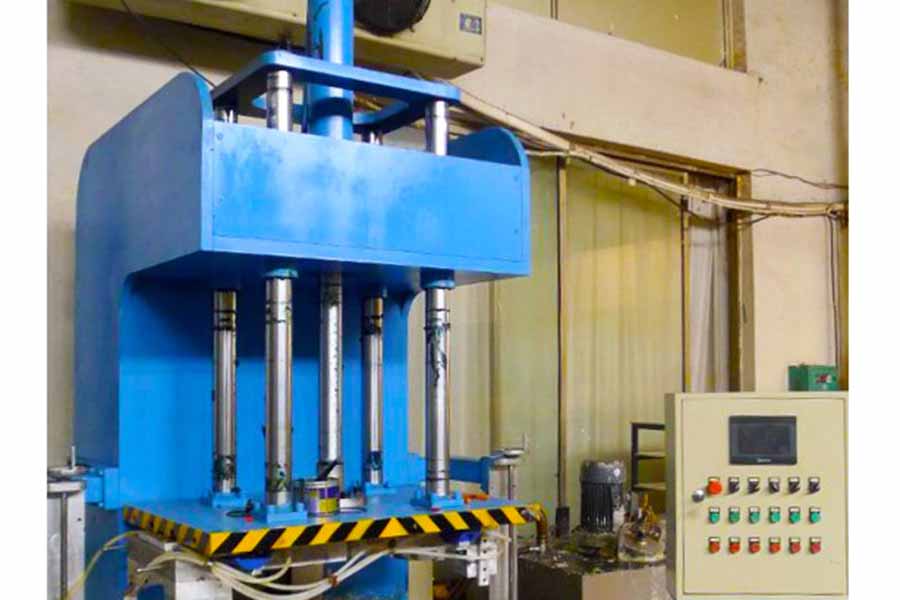
Gray and Ductile Iron Green Sand Casting Foundry
Material: Ductile (Nodular) Iron, Gray Iron, Process: Green Sand Casting Weight: 6.90 kg Application: Valve Component
Gray and Ductile Iron Green Sand Casting Foundry from China with OEM Custom Services and CNC Precision Machining Services
Gray and Ductile Iron Green Sand Casting Foundry from China with OEM Custom Services and CNC Precision Machining Services
Green sand is a kind of moulding sand with no need to dry and takes the bentonite as binder. The basic feature of green sand is that it does not need to be dried and solidified, while it has a certain wet strength. Although the strength is low, it has better retreatability and is easy to shake off; moreover, the green sand casting process has several advantages of high moulding efficiency, short production cycle, low material cost and it is easy to organize flow production. However, because the sand mold is not dried, moisture vaporization and migration appear on the surface of the sand mold during casting, which makes the casting prone to have blowholes, sand inclusions, bulging sand, sticky sand and other casting defects.
In order to give full play to the advantages of green sand molding and improve the quality of castings, it is necessary to maintain stable molding sand performance, compact and uniform sand molds and reasonable casting process during the production process. Therefore, the development of green sand molding technology has always been closely linked to the development of molding machine and molding technology. Recently, green sand mechanized moulding has developed from ordinary machine moulding to high-density machine moulding. The productivity of moulding, the compactness of sand molds, and the dimensional accuracy of castings continue to increase, while the surface roughness value of castings continues to decrease.
Green sand is mainly used in the production of small and medium-sized castings, especially in the production of large-scale mechanized modeling of castings such as automobiles, tractors, diesel engines, and textile machinery. Green sand moulding casting process (when paint is not applied) can also produce iron castings weighing several hundred kilograms.
Green sand is generally composed of new sand, old sand, bentonite, addenda and a proper amount of water. Before formulating the ratio of molding sand, it is necessary to determine the performance range and control target value of the molding sand according to the type of alloy poured, the characteristics and requirements of the casting, the molding method and the process and the cleaning method. After that, according to the variety and specifications of various raw materials, sand processing method, equipment, sand to iron ratio and the burning loss ratio of various materials are used to formulate the sand ratio. The technical indicators and proportions of molding sand can only be determined after long-term production verification.
▶ Capabilities of Sand Casting moulded by hand:
• Max Size: 1,500 mm × 1000 mm × 500 mm
• Weight Range: 0.5 kg - 500 kg
• Annual Capacity: 5,000 tons - 6,000 tons
• Tolerances: On Request or Standard
• Mold Materials: Green Sand Casting, Shell Mold Sand Casting.
▶ Capabilities of Sand Casting by Automatic Molding Machines:
• Max Size: 1,000 mm × 800 mm × 500 mm
• Weight Range: 0.5 kg - 500 kg
• Annual Capacity: 8,000 tons - 10,000 tons
• Tolerances: On Request.
• Mold Materials: Green Sand Casting, Shell Mold Sand Casting.
▶ Materials Available for Sand Casting Foundry at RMC:
• Brass, Red Copper, Bronze or other Copper-based alloy metals: ZCuZn39Pb3, ZCuZn39Pb2, ZCuZn38Mn2Pb2, ZCuZn40Pb2, ZCuZn16Si4
• Gray Iron: HT150, HT200, HT250, HT300, HT350; GJL-100, GJL-150, GJL-200, GJL-250, GJL-300, GJL-350; GG10~GG40.
• Ductile Iron or Nodular Iron: GGG40, GGG50, GGG60, GGG70, GGG80; GJS-400-18, GJS-40-15, GJS-450-10, GJS-500-7, GJS-600-3, GJS-700-2, GJS-800-2; QT400-18, QT450-10, QT500-7, QT600-3, QT700-2, QT800-2;
• Aluminium and Their Alloys
• Other Materials as per your unique requirements or according to ASTM, SAE, AISI, ACI, DIN, EN, ISO, and GB standards

 русский
русский




